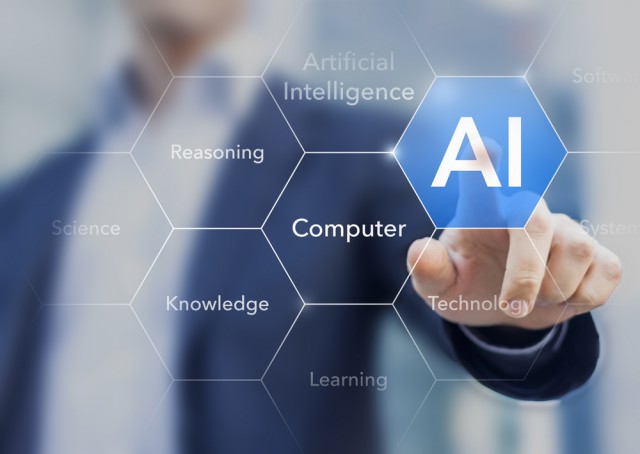
Traumatizing content and towering heights: America's three worst tech jobs
What is the worst job in the tech industry? Even in the United States, where Occupational Health and Safety (OSHA) rules are intended to protect workers from dangerous or inhumane working conditions, there are a few tech jobs in which the cons of the position appear to significantly outweigh the pros.
Here are three of the very worst jobs in technology.

Evolution of privacy protection over the coming years
The war over data privacy has been raging for 25 years and is far from over. Large corporations, states and criminal networks are improving tracking tools, trying to dictate their own rules, and control and manage people's need to protect their personal data. The issue of privacy is getting unbelievable traction on different levels, including the GDPR (General Data Protection Regulation) and CCPA (California Consumer Privacy Act).
The value of personal data is constantly increasing, as it's getting harder to collect, and the possibilities of making money on it are endless. Will users ever be able to decide for themselves what information they are willing to share? To address this question, let's move away from individual cases and look at how privacy protection technologies in general will develop in the coming years.

Why payroll security is even more essential now remote work is the norm
The COVID-19 pandemic is changing the way people work and do business. As governments worldwide impose compulsory community quarantines and lockdowns, many are turning to the internet to continue operating their businesses or doing their jobs. Teleworking is becoming the new normal with everyone expected to observe physical distancing to avoid the pandemic spreading.
Among other systems, payroll is one of the workflows worth examining amidst the changes brought about by the pandemic. As companies adopt remote work arrangements to avoid complete operational shutdown, those that have been manually processing their payroll need to find ways to adjust to the new situation.

Four things every enterprise needs to consider to emerge healthy
The technology industry has always moved quickly, but COVID-19 is putting companies’ flexibility and adaptability to the test. Although employees are increasingly working remotely, few organizations were prepared to go 100 percent virtual within the matter of a week or two while attempting to understand what life in a pandemic looks like.
As the shock and awe of self-isolating practices and quarantines wears off, there are some things enterprises need to consider in order to not just remain in business but ultimately emerge "healthy."

Tax season is on, so are the scammers
The Better Business Bureau (BBB) recently issued a statement confirming that it is the busiest time of the year not only for the IRS, but also for bad actors trying to scam their way into people’s tax refunds. According to the BBB, the earlier you file your taxes, the lesser the chances of someone stealing your identity and claiming your tax returns. Unfortunately, a high percentage of everyone filing leave it for the last moment -- which will be July 15 this year -- and these are precisely the people scammers are targeting.
During tax season, many Americans wait on hefty refunds from the government. According to a survey done by NerdWallet, more than two out of five people said they prefer to overpay their taxes and get a refund. When scaled up to a national level, this means that the IRS is currently issuing refunds to staggering 80 million people. With major data leaks observed over the previous years, we’ve seen that scammers can quickly complete the puzzle of a person’s identity and get access to their cash. So, what are the top tax scams going on at the moment?

Remote 2.0: Virtually closing the gap in IT training and sales
Nothing will entirely replace meeting face-to-face, particularly when it comes to IT training and sales. After all, you’re dealing with complex solutions in precise applications. That requires seeing a product in action, demonstrated in real-world scenarios and hands-on test drives.
With the arrival of COVID-19, in-person meetings, events, user groups and training sessions ground to a halt, impacting IT education and sales. While other industries immediately sought to move employees onto basic conferencing platforms like Zoom or WebEx, those in tech had more sophisticated needs, closer to remote 2.0 in comparison. Foremost, training and sales teams have to effectively deliver user and prospect experiences that can transcend today’s physical limitations, turn heads and improve the bottom line. The following are some areas to focus on to elevate your game and bridge the in-person/virtual gap.

A post pandemic world: A technologist's thoughts on professional and social change
It’s sometimes hard to imagine life returning to normal. Nevertheless, this pandemic, like those of the past, will eventually recede, but it won’t leave us unchanged. COVID-19 has already had a dramatic impact on our lives and how we interact, conduct business and obtain the products and services we need.
As chief technology officer of a technology service provider, it’s my job to consider how such events will shape business so we can adjust the services we deliver accordingly. Naturally, I have specific thoughts on topics like backup and disaster recovery as a service (DRaaS), but I also have to consider societal changes and the ways in which businesses and consumers will utilize technology moving forward. So, what will a world after COVID-19 look like? Here are a few observations and thoughts.

Hiring and employment during COVID-19
The first United States case of COVID-19 was reported on January 20. Since then, the U.S. has become the epicenter of the novel coronavirus pandemic with more than twice as many confirmed cases as any other country in the world. The disease has led to lockdowns and quarantines on a scale never before seen in the U.S. as well as significant impacts on the economy and job market.
For employees and workplaces, these shifts could reverberate far into the future, potentially transforming virtually every aspect of hiring and employment.

Cybersecurity 2020: The trends SMBs will need to prepare for
The rapid evolution of cybersecurity remained a major issue for small businesses in 2019, being named the top concern for all businesses, regardless of their size. Along with an increase in the number of cybercrimes, the cost of recovering from an attack means keeping ahead of the curve is vital for SMBs going forward.
This is challenging enough for businesses operating on a small budget, but fast-paced changes in technology mean that security resources are increasingly being stretched in a number of directions. Rather than protecting a single, traditional office, security must now cover a whole range of devices used for IoT and mobile working. Proactivity is now essential to an effective security strategy. By looking ahead to the trends of the next 12 months, SMBs can begin to identify the new challenges around cybersecurity that they will need to prepare for.

Legacy VPNs facing unprecedented modern security threats
Remote work is the future. Remote work is our new reality. Even though Gartner predicted that by 2020, half of the US workforce will be working remotely, no one could have anticipated it to become ubiquitous given the COVID-19 outbreak. The once-familiar 9-to-5 office environment as we know it has changed dramatically, and now, nearly everyone has been forced to work from home for the foreseeable future. This change is also expected to become permanent for many companies given the various benefits this model provides.
This rapid global transformation has forced the largest amount of people to work remotely in history. With millions of people connecting to their corporate networks from their homes, network infrastructure is being taxed like never before, creating new issues of internet overload and skyrocketing VPN usage.

Enterprise AI, ground truth, and the 'corona effect'
Nothing in our lifetimes has prepared us for what's happening in our world today. We've certainly had our share of major catastrophes in the past 100 years -- both natural and man made -- but nothing matches the impact of the COVID-19 pandemic. We are living in a time when fundamental assumptions about how our societies function are being thrown out and re-written with blinding speed.
The degree of global disruption is unprecedented in scope and scale, and we're still in the early phases. Given the confluence of medical, social, political, and economic factors, we have not yet reached the peak of the impact, and the world we'll inherit as the storm tide recedes will be significantly changed, and changeable. This is not to suggest that "the end is nigh" or that all changes wrought by the pandemic will be bad. But the undeniable truth is that we are experiencing an unexpected and extreme test of our AI technologies and their ability to automate and improve our ability to make good decisions quickly in increasingly complex situations. With respect to AI, we are entering an especially critical phase.

Microservices, identity, and privacy by design
Part 2: The advent of Microservices has dramatically opened up the ability to rapidly develop and update applications and services. This is done by breaking them into very small pieces, where each piece can be managed by a single team or one team can manage several pieces. Each of these pieces then comes together with hundreds or thousands other pieces to create a larger framework or workflow. They are at the heart of the DevOps methodology, and an expectation today with the idea of a continues development or continuous delivery mindset.
This provides application and service owners the ability to rapidly scale, update, and develop their services is something that most modern business application service owners want. This also makes businesses run more efficiently. An example is when you need more delivery job servers, with Microservices you spawn more job services and you don’t go down. Easier and more efficient. However, in today’s world, we need to remember that privacy and security have to be top concerns. And in today’s world, Microservices are lacking in this area.

How real-time AI can help make decisions throughout the customer journey
When it comes to making quick, real-time business decisions, Artificial Intelligence (AI) has proven to be a vital component of any effective business strategy. This is reflected in statistics showing how AI implementation jumped from 48 percent in 2018 to 72 percent in 2019. As technology continues to improve, no doubt this number will continue to increase with AI becoming an even larger asset to improve your operational capacity.
If utilized correctly, real-time AI has the ability to vastly improve real-time decisions for companies throughout the customer journey – from acquisition through to customer service and customer retention.

CIOs in the next ten years: Politics and personality assessments become must-have CIO tools
Over the next decade, the CIO's job will dissolve into the business and take on many of the tasks typically performed by CEOs, CFOs, and even sales departments. This will not be so much of a technology sprawl, as more of a responsibility sprawl that can be attributed to the pervasive spread of digital transformations into every aspect of a company.
No longer will the CIO be only concerned with data backups or IP phone systems -- more and more these will become expected utilities in the same manner as the lights are expected to click on or water is expected to flow in the restroom. This new omnipresent nature of the CIO is absolutely necessary to ensure all business elements run efficiently. In essence, the CIO will become an evangelist for transformations that empower the entire process from supply chains to Salesforce and ERP integrations.

So, what are Microservices?
Part 1: You may have heard the term Microservices before, but every time you do, you ask yourself -- What exactly is a microservice?
Let’s break down exactly what this technology is, why it’s so great for organizations to leverage and challenges they should prepare for.

